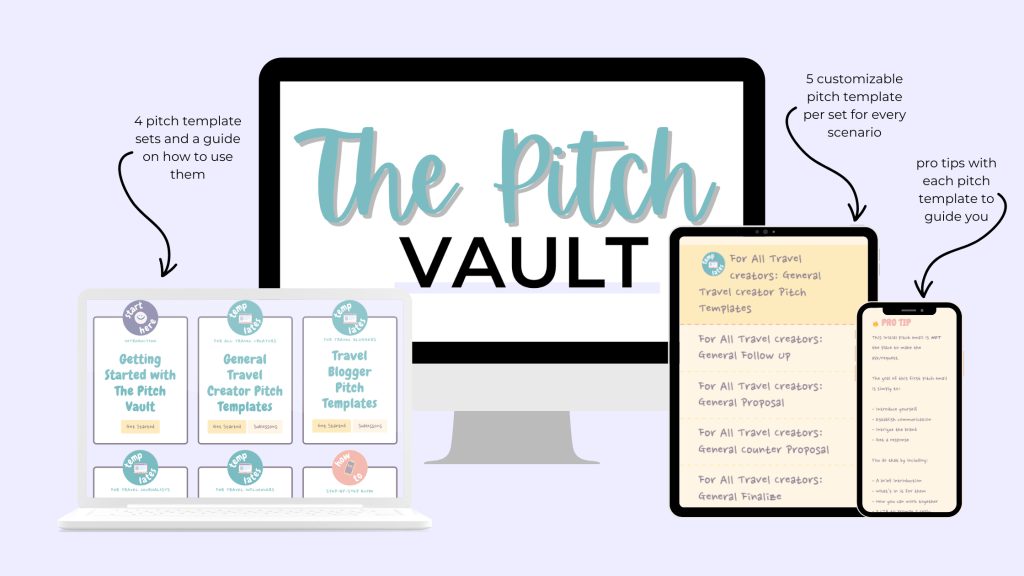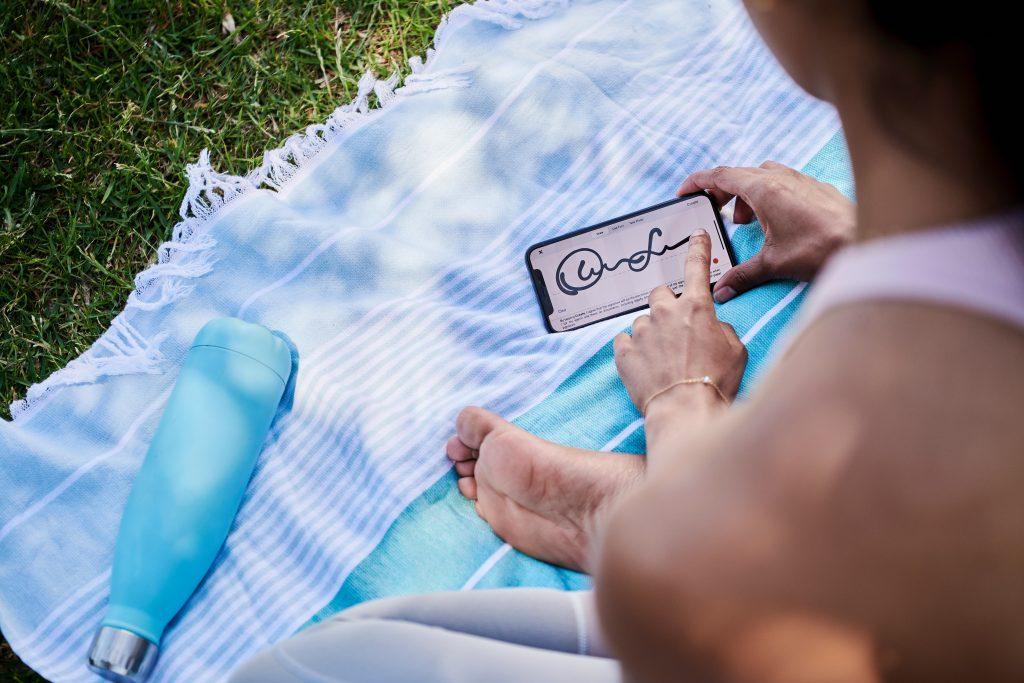Travel writing is a passion for many. A way to document their adventures and share their experiences with others. But getting your travel stories published in a reputable publication can be a challenging task.
This is where a query letter comes into play – it’s a crucial tool for travel writers who want to get their work in front of the right audience.
A well-crafted query letter can make all the difference in getting your travel story noticed by a travel editor. But for many writers, the process of writing a query letter can be daunting, especially if you’re not sure where to start. That’s why we’ve put together this blog post. To help you understand what a query letter is, why it’s important, and how to create your own query letter template to make the process of writing one a little easier.
Whether you’re a seasoned travel writer or just starting out, this guide will provide you with the information you need to create a winning query letter and your own query letter template for future pitches.
Disclaimer: This blog post may contain affiliate links. Keep in mind that I may receive a small commission at no extra cost to you when you click my links and make a purchase. However, this does not impact my opinion in any way. I only promote brands I believe in and products that I use and love myself. I try my best to keep things fair and balanced to help you make the best choice for you.
Learn to Love Pitching
I know freelance writers who hate pitching stories. But I like to think of it as a way to come up with ideas for dream trips, which are a travel writer’s main source of income and a lot of fun.
If you don’t like the challenge of pitching, it’s almost impossible to make a living in this business. Every freelance writer needs to try to get their work as good as it can be. By learning the intricacies of pitching and creating your own customizable query letter template you can make the process easier for yourself.
And who knows… you may even start to enjoy the challenge of selling your travel stories 🙂

Pitching Tips
I know pitching can be intimidating but that’s why I usually suggest that new writers start with a query letter template that’s already been designed. However, even if you are using a query letter template, you need to know how to pitch correctly to avoid making mistakes that could negatively affect your career.

Need some help pitching brands?
The Pitch Vault is the ultimate resource of pitch templates for every type of travel creator in any pitching situation!
Here are some tips to guide you as you start pitching:
Pitch the Right Person
This should be easy to figure out if you look at the magazine’s website. You can even call or email the magazine. Some editors are active on social platforms like Twitter – you can connect with them there too. But don’t pitch or send a query letter via DM’s. Use social media as a way to get the right contact details. Only pitch via email.
Send Your Email to the Right Person at the Right Magazine
Don’t copy and paste a story idea and send it to competing publications without first changing the editor’s name or the name of the magazine. Not a good way to start, at all. Yes, it does happen. I saw this a lot while working as an editor. Unfortunately, this is a problem if you’re using a query letter template – so be conscientious and make sure to customize everything if you’re using a query letter template.
Tone Down the Acronyms and Emojis
Keep your acronyms and emojis for your friends. And make sure your spelling and grammar are correct for that matter. You want to make a good first impression and a writer with errors in a pitch email doesn’t get the gig. Use a tool like Grammarly (the extension) to resolve any problems before you hit send.

Familiarize Yourself with the Publication
Know what kinds of stories they run, which destinations they cover, how they usually organize their stories, who their readers are, and the tone of the magazine. This is very important because it shows that you know the magazine and will be able to write something that fits the magazine’s style. When you are familiar with the publication you’re pitching it becomes easier to customize your query letter template.
Research Further
Look at issues that have come out in the last year. If the editor just ran a similar story about the same place or topic, it’s unlikely that they will accept your story. Rather pitch another idea that hasn’t been recently covered. This will save you a lot of time and effort.
Focus on Your Angle
Try to find a point of view that is interesting, fits the magazine, hasn’t been covered before, and isn’t likely to be covered by other magazines. I know – this is easier said than done – but focusing on a unique angle is all about sharing your views, opinions, or perspectives. Nobody else sees a destination the same way that you do. Lean into that!

Disclose Any Sponsors
Be clear about who is paying for your trip. If a company is paying for it or you’ve been invited on a press trip, they will want to be mentioned in your story. Read the magazine’s guidelines on sponsors before pitching. Some might not allow sponsored content while others would ask that you disclose it in advance. More importantly, your content should be written truthfully regardless of the sponsor.
Get Specific
Tell the editor what to expect from you and what you’re good at and what you’re interested in. For example, “I’m a certified diver and a trained marine biologist, so I can write about the protected reefs off the coast of Mozambique with authority.” Or, “I speak French well, and I plan to talk to a lot of locals in the food markets of Mauritius to find out how to make the best curry.“
Share Your Samples
Sharing samples of your previous work (even if it’s unpublished or on your blog) gives the editor more to work with. If the editor can see that you’re a good writer but that your pitch doesn’t fit the magazine, they’ll be more likely to work with you to find a different angle. Make sure your query letter template includes a space for sharing links to your samples.
Follow Up
Always, always follow up! Don’t call or email the editor a lot, but if you haven’t heard from them in two weeks, send them a friendly reminder. Chances are, they’re busy with deadlines and your email got lost in the chaos of their inbox. Editors get a ton of emails so it’s very likely. If you’re creating a query letter template for yourself, I suggest drafting a follow-up template at the same time.

How to Craft a Killer Pitch (create your own query letter template)
Writing a good pitch requires the same skill as writing the story itself. It could take even longer if you’re confined to a word count of, ideally, less than 100 words.
That’s why you can’t solely rely on a query letter template; especially not one created by someone else.
However, putting together an appealing pitch is critical if you want to be invited to write and be paid for the feature. Spend at least as much time polishing your pitch as you would the finished product.
An editor is unlikely to believe in the professionalism of a writer who submits a pitch that contains spelling, grammatical, or factual errors.
To put together your pitch email and create your own query letter template for future use, follow these guidelines:
Include Your Personal Bio
Give your writing background and credentials in as few words as possible, demonstrating why you will be the ideal new writer for the publication. (This is aimed at convincing editors to commission you for one of the pitches to follow in this same email, and also to instill the idea that this might be the start of an ongoing working relationship).
If you’ve already had features published, attach them or, because some editors will refuse to open files from unknown sources, upload them to your website or an online portfolio like www.clippings.me.
If you haven’t had anything published yet, don’t worry – this is the section of the pitching email where you can highlight any other skills (languages or travel experience) that are relevant to the regions from which you’ll be pitching stories.
This is part of your query letter template that can be written in advance without the need for extra customization.

Present the Pitches
Now, this is the section of your query letter template that will need to be completely customized every time you send it.
To increase your chances of catching your dinner, consider using a throw net rather than a single hook.
My ideal pitching email would include three or four distinct ideas and perspectives from a variety of sources. Each pitch should potentially fit with the magazine’s style, but don’t be afraid to think outside the box. You never know what was discussed in the most recent editorial meeting, and perhaps a change of strategy was suggested if editors/publishers/sales teams believe they are getting stuck in a rut with content.
You should already be familiar with the magazine’s style, so you can hope that any of these pitches will be appealing – at the very least, this demonstration of imagination and enthusiasm will show the editor that you are a contributor capable of making suggestions.
Instead of accepting one of your pitches, the editor may appreciate your versatility and suggest that you write a feature from a completely different perspective.
Apologize for bombarding the editor with ideas and promise to ‘keep the following pitches as brief as possible,’ adding that ‘if more details are required, please let me know’.
The Actual Pitches
Try to keep each pitch to around 100 words and give it a bold heading so that the editor can scan through and ignore any story ideas that don’t immediately appeal to him or her.
You can create this type of format easily within your query letter template so that you can just change the words for each new pitch.
A pitch should be a condensed version of the article you want to write, and just as you’d hope to pique a reader’s interest with your first line, you should do the same with the pitch.
Mention the setting, the topic, and any sources or experts who may be important to the story.

Include the Topic and Destination
Make sure you’re pitching areas that the publication covers, and if they cover a variety of stories from around the world, feel free to brainstorm ideas that they haven’t covered before.
I might pitch a feature on a horse-riding safari in South Africa, Lisbon’s best secret street-food spots, a conservation story from a research project in Namibia, and a story on literary hangouts in Obidos to a global magazine with a diverse range of interests.
Obviously, as time passes, a travel writer has more opportunities to collect a wider variety of potential stories, but don’t be afraid to mix pitches from previous trips with pitches for assignments you’d like to do.
Sign Off with Style
If you’re wondering how to close a query letter template, I suggest a two-pronged approach.
First, express your regret that the pitches have taken longer than you had anticipated (as they inevitably do)… but blame it on your enthusiasm and the ‘wide scope of potential material’.
Then add a polite sign-off at the end of the email that expresses your eagerness to forge a long-lasting working relationship. You may also covertly mention “upcoming trips that are on your travel plans for the year.”These trips, which are effectively mini-pitches that help you spread your net even further, maybe planned or simply places you’d like to visit if you had a commission.
It’s not uncommon for the pitches in your email to be rejected for various reasons, but to receive an invitation to send additional pitches for one of these ‘planned’ trips. If an editor approves one of your pitches about a destination you haven’t visited yet, they will usually be flexible about the deadline to allow you time to put it together.
It’s a good idea to limit these pitches to places that are either nearby or accessible for a reasonable price because you need to be sure in advance that you can afford the cost of the trip.
Jack’s Flight Club is a great place to start looking for cheap flights. A pro account is a worthwhile investment for any traveler because it gives you first access to the best deals and, in many cases, irresistible ‘error prices,’ where airlines inadvertently advertise ridiculously cheap flights.
Although each seasoned freelance travel writer is likely to have their own pitch format, I prefer the example above when pitching to editors for whom I haven’t yet written.
You have more freedom to send quick messages like, “Hey friend, just came across an idea that might appeal,” as the working relationship becomes more established.

Post Pitch Tips
So, you’ve crafted a killer pitch (and designed your own query letter template). You double-checked your spelling and grammar. Procrastinated as long as you could but finally with a deep breath and shaking hand, you hit “send!”
Now, what?
The wait post-pitch is sometimes worse than actually sending it.
Here are some tips on how to handle the following scenarios:
Patience
How long should you wait for an editor to respond before pitching someone else?
Regrettably, there is no definitive answer to this question. Some editors are notoriously slow to respond, and even those who are relatively quick to respond can wait several weeks before reviewing pitches or commissioning upcoming issues.
But be very careful not to fall into the trap of pitching two similar stories to competing titles. If the editors commission you to write the features and both stories appear, you will most likely be blacklisted from both publications in the future.
To avoid this, make sure that the articles you pitch can be given a wildly different slant – ideally, so different that a reader wouldn’t recognize the same subject matter.
I share a guide on how to develop endless story ideas within the Wildly Successful Travelpreneurs membership!
Rejection
Hopefully, your pitch will be well received and perfectly timed, and you will be rewarded with a prompt and positive response.
Freelance travel writing is frequently a numbers game, so don’t be disheartened if you receive a rejection or, more often, no response at all. This can happen to even the most seasoned freelancer.
There are a variety of reasons why perfectly good pitches are rejected, even when they come from regular contributors to a magazine.
Even the most experienced pro cannot always control these factors:
- The subject or topics may have been discussed in a recent (or upcoming) issue. If this turns out to be the case, take heart in the fact that you’re at least coming up with the right kind of ideas. The editor may already have features planned for the region you’re pitching. Wait a few weeks so the editor doesn’t think you’re bothering him, then try pitches from other areas.
- It is sometimes a matter of marketing and advertising revenue. Your ground-breaking, earth-shattering Cambodia pitch could have been turned down simply because a magazine advertiser has been promised a Thailand story in that issue.

Create Your Query Letter Template
Now that you know all the elements involved in a pitch, it’s time to craft your own query letter template. Once you’ve designed it, future pitches will be less time-consuming. But don’t be afraid to tweak your query letter template based on the feedback and acceptance rate of your pitches. And, always customize it according to the magazine you’re pitching!
The Essentials of Blogging: Tips and Strategies for Success
Introduction Welcome to the world of blogging! Whether you’re a beginner looking to start your…
Maximizing Your Blog’s Reach: SEO Tips for Bloggers
Introduction In the digital world, understanding and implementing Search Engine Optimization (SEO) is crucial for…
Crafting the Perfect Blog Structure: A Guide for Effective Blogging
Introduction Every great blog post starts with a solid structure. A well-structured blog not only…
Never Run Out of Ideas: Top Tips for Generating Fresh Blog Topics
Introduction One of the biggest challenges for bloggers is consistently coming up with new and…























Your article gave me a lot of inspiration, I hope you can explain your point of view in more detail, because I have some doubts, thank you.
Your article gave me a lot of inspiration, I hope you can explain your point of view in more detail, because I have some doubts, thank you.
Apoiar ferramentas de apostas e estar equipado com uma plataforma diversificada de transações financeiras, a 20Bet oferece suporte tangível aos jogadores. Este é um lugar onde eles podem apostar com dinheiro real, respaldados por concorrentes de diversas disciplinas esportivas. 20bet
I love what you guys are up too. This kind of clever work and
exposure! Keep up the excellent works guys I’ve incorporated you guys
to our blogroll.
Thank you very much for sharing, I learned a lot from your article. Very cool. Thanks. nimabi
Thank you for your sharing. I am worried that I lack creative ideas. It is your article that makes me full of hope. Thank you. But, I have a question, can you help me? https://accounts.binance.com/es/register?ref=WTOZ531Y
Thank you for your sharing. I am worried that I lack creative ideas. It is your article that makes me full of hope. Thank you. But, I have a question, can you help me? https://accounts.binance.com/es/register-person?ref=UM6SMJM3
Can you be more specific about the content of your article? After reading it, I still have some doubts. Hope you can help me. https://accounts.binance.com/el/register?ref=RQUR4BEO
Can you be more specific about the content of your article? After reading it, I still have some doubts. Hope you can help me. https://www.binance.info/uk-UA/join?ref=53551167
Your article helped me a lot, is there any more related content? Thanks! https://accounts.binance.com/lv/register?ref=IQY5TET4
Can you be more specific about the content of your article? After reading it, I still have some doubts. Hope you can help me. https://www.binance.info/pt-PT/join?ref=T7KCZASX
Thank you for your sharing. I am worried that I lack creative ideas. It is your article that makes me full of hope. Thank you. But, I have a question, can you help me? https://accounts.binance.com/sv/register?ref=P9L9FQKY
Can you be more specific about the content of your article? After reading it, I still have some doubts. Hope you can help me. https://www.binance.com/it/join?ref=WTOZ531Y
Your point of view caught my eye and was very interesting. Thanks. I have a question for you. https://accounts.binance.com/zh-TC/register-person?ref=WTOZ531Y
I don’t think the title of your article matches the content lol. Just kidding, mainly because I had some doubts after reading the article. https://www.binance.info/ru/join?ref=WTOZ531Y
I don’t think the title of your article matches the content lol. Just kidding, mainly because I had some doubts after reading the article. https://www.binance.info/uk-UA/join?ref=S5H7X3LP
Can you be more specific about the content of your article? After reading it, I still have some doubts. Hope you can help me. https://accounts.binance.com/ur/register-person?ref=T7KCZASX
I don’t think the title of your article matches the content lol. Just kidding, mainly because I had some doubts after reading the article.
Thank you for your sharing. I am worried that I lack creative ideas. It is your article that makes me full of hope. Thank you. But, I have a question, can you help me?
I don’t think the title of your article matches the content lol. Just kidding, mainly because I had some doubts after reading the article.
Thanks for sharing. I read many of your blog posts, cool, your blog is very good.
Can you be more specific about the content of your article? After reading it, I still have some doubts. Hope you can help me.
Your article helped me a lot, is there any more related content? Thanks!
Thank you for your sharing. I am worried that I lack creative ideas. It is your article that makes me full of hope. Thank you. But, I have a question, can you help me?
I don’t think the title of your article matches the content lol. Just kidding, mainly because I had some doubts after reading the article.
Thank you for the auspicious writeup It in fact was a amusement account it Look advanced to far added agreeable from you However how can we communicate
Your point of view caught my eye and was very interesting. Thanks. I have a question for you.
Your article helped me a lot, is there any more related content? Thanks!
I don’t think the title of your article matches the content lol. Just kidding, mainly because I had some doubts after reading the article.
Your point of view caught my eye and was very interesting. Thanks. I have a question for you.
Thank you for your sharing. I am worried that I lack creative ideas. It is your article that makes me full of hope. Thank you. But, I have a question, can you help me?
Your article helped me a lot, is there any more related content? Thanks!